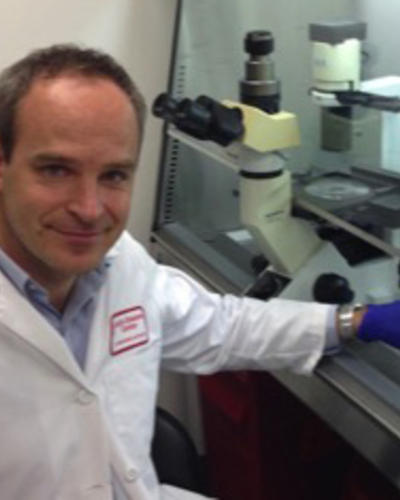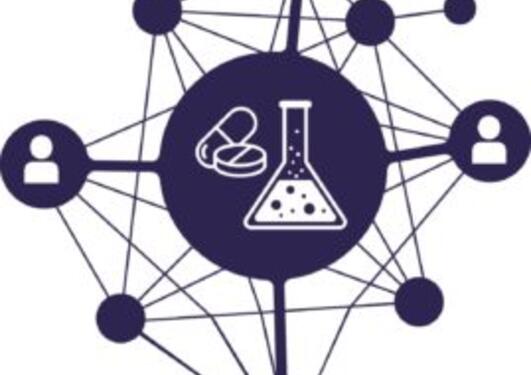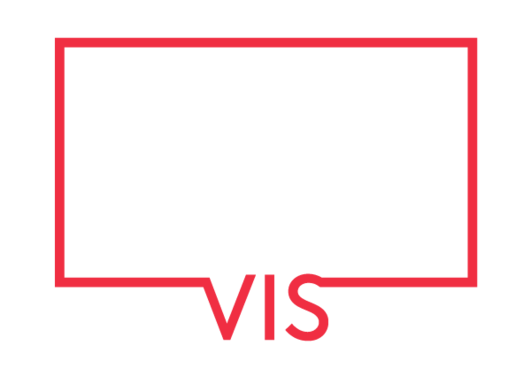From knowledge to solutions
The research we produce is to be transformed into new ideas and solutions with clear societal benefit.

Main content
The Medical Faculty focuses on innovation through several paths. The largest initiatives are Alrek Health Cluster, the buildingof a new Innovation Center at Haukeland and the Center for Reserach-based Innovation (SFI) in mental health. In addition we have running innovation projects across a range of fields. The faculty has its own innovation advisor, all departments have innovation leaders, and we have a tight cooperation with VIS (our TTO) and the UiB central Research and Innovation department (FIA). We have several innovative spin-out companies founded and run by our reserachers, but want more. We also want closer cooperation and strategic alliances with private industry and public bodies. All of this is because we want our reserach to become good solutions that transform society.
Large Innovation Projects
Alrek Health Cluster. Alrek is a science cluster but also a innovation cluster. Construction phase 4 will include large areas for innovation. Health service innovation and digital health are key innovation areas that naturally fall under Alrek.
New Medical Innovation Center. UiB is in the process of building a new Innovation Center at Haukeland. The Center is a cooperation between UiB, Helse Bergen and VIS, and will focus on development of commercializable ideas and start-up companies. The center will host a start-up incubator program, development labs and support services. The facilities are planned finished by Q4 2021, watch the progress live here.
ForHelse Center for Research Based Innovation (SFI) in digital mental health services. The center is a cooperation between Helse Bergen, St.Olavs, UiB and other institutions. The main goal is to increase the use and effects of digital interventions in mental health. The center opens December 2020.
Support System for researchers / innovators
VIS development path
VIS is UiBs technology transfer office (TTO) tasked with commercializing promising ideas, and also has a key role as business incubator and entrepreneurship hub for Western Norway. VIS is a key partner if you have an idea with large impact potential. The path from idea to success can be long, and the typical development path through VIS goes through a series of stages.
First step is to submit the idea and define it through a DOFI (Declaration of Innovation or Disclosure of Invention). This gives the VIS business developers enough information to perform first evaluations of market potentil and novelty/patentability. If the idea gets a green light it proceeds to patenting and securing commercialisation funding. Later in the process it will often be relevant to spin out the idea as a separate company and seek private venture capital.
What can the innovation advisor do?
The Medical Faculty has (as first UiB facultt) a dedicated Innovation advisor. Our researchers can get assistance with for example.
- the DOFI process (define and document the ideas/potential)
- simple patent searches and preliminary assessment of novelty and 'inventiveness'
- innovation project structure and project description
- IPR-clauses i cooperation projects
- idea pitching and business plans
- seminars in f.ex IPR or innovation methodology
Different types of innovation
Innovation = commercialization? or more?
Googling ‘innovation’ reveals a jungle of different terms and approaches. But we can roughly sort these into categories:
- ‘hard innovations’ suitable for patentering and private sector commercialization (i.e: entrepreneurship). Typically we talk about new products, designs and productions processes that can be clearly defined, protected and monetized.
- ‘soft innovations’ that are not directly commercial, such as better organisation of health services, new education formats, and social innovations. This type innovation is relevant for public sector and societal challenges. Often the 'soft' innovations connect well with some 'harder' innovations.
The Faculty of Medicine operates with a wide understanding of 'innovation' as the processen of turning knowledge and ideas into new and working better solutions (‘realising impact’). This view includes both ‘hard’ and ‘soft’ innovation (for instance the UiB internal service innovation program).
The Research Council of Norway, EIC, Innovation Norway and many others use a narrower definition focusing on commercialization and entrepreneurship, i.e. ‘hard’ innovation. This is seen for instance in the definitions of RCN 'Innovation Projects' and EU 'Research and Innvation Actions'.
The Faculty of Medicine and UiB wants good reserach to contribute to shaping and improving society. Patenting and commersializaition are good engines for bringing the good solutions out in the world, but are not the only way to make impact. If you have a good idea with a clear societal benefit but no clear commercial potential - please submit to us nonetheless.
Responsible innovation, Sustainable innovation, Open innovation…
These are cross-cutting issues that apply to all types of innovation, and are also key EU policies.
Responsible innovation is about ensuring that new solutions are not only economically sustainable but also have positive societal effects. In practical terms this is about including different stakeholders throughout the process. Sustainable innovation is a the part of Responsible innovation focusing on ecological impact.
Open innovation is based on the simple observation that sharing ideas across organisations and research fields ultimately leads to new and better ideas. The main part of the policy is encouraging industry to sharing knowledge with competitors for example via knowledge clusters and cooperative projects. In academia we see the corresponding fokus on interdisciplinarity and partner requirements in projects.
Patenting and IPR
The DOFI system
DOFI means Disclosure of Invention, or the broader Declaration of Innovation. This is a signed document describing an idea adn who owns it. It is not a legal document designed to protect rights (i.e. patent), but a starting point for evaluation of patentability and commercial potential.
By submitting a DOFI to the faculty you engage the support system and start the formal processes. The purpose of the DOFI is not to 'measure activity' but to formally define ideas sufficiently well for determining commercial potential, owership and patentability. Therefore, the DOFI must describe:
- what problem does the idea solve?
- what distinguished it from closest existing solutions?
- who has contributed creatively to the innovative/distinguishing part?
DOFI is submitted online via a simple form. Copy of this form is automatically forwarded to department leaders and faculty administration, who formally forward to VIS.
Should i patent my idea?
Patents are a critical tool for realising commercial development and making a venture economically sustainable (or at least worth the risk). In fields such as medtech and pharma, clinical trials and approvals are enormously resource consuming and impossible to secure financing for unless you have IPR. A brilliant idea given free to all can lead to noone being willing to take the risk of being the first one to develop it. On the other hand, an IP licence gives a clear incentive to take the idea to market and upscale it as fast as possible before the patent exires.
Patenting essentially requires three things:
- The Idea must have a clear commercial potential exploitable within the 20 year patent lifetime. If there is no money to be made, protecting the commercial rights is simply not worth the cost.
- The idea must have a clear "inventive step", meaning patent examinor must evaluate is as 'not obvious to a skilled person knowing the existing prior art'. Defining clearly what is the innovative in your idea is critically important but also difficult and normally requires the help of a good patent attourney.
- All ownership/co-inventors must the clarified by the time the patent is filed. Errors here can later lead to the whole patent being annulled.
Who owns the ideas?
Read UiB rules here
Anyone who creatively contributes to the new idea is a (co)inventor. In projects with multiple partners it can be hard to define who can contributed "just enough"; there are good guidelines for example at the EU IP helpdesk and you can get advice from innovation advisor, VIS and FIA. In the end the questions is whether anyone could potentially sue you and win.
The employer invention act dictates that the employer in principle owns 100% of the IPR generated by their reserachers, but UiB returns rights so that inventors share 33%, VIS gets 33% and UiB 33%. If there are inventors with multiple employers (such as HUS+UiB) the parties have to agree how to split the IPR (and costs). Sometimes it is obivous that the innovation is linked to just one employment, but such cases are handled individually. If you are a co-inventor at a patent filed through another partner/TTO, please contact your innovation advisor or the IFA legal team to ensure you have a valid agreement covering your/UiBs rights.
Commersialization og entrepreneurship
How do I get started?
Researchers usually start with a scientific breakthrough enabling a novel solution. The trick is to make sure that solution is to a problem worth the effort of solving. The formal commercialisation process at UiB starts with submission of the DOFI which also starts the process with VIS. It is possible to apply directly for commercialiation funding (such as STUD-ENT programme for students), but we recommend doing this in cooperation with VIS or a similar partner.
When to spin out a company?
Ideas can initially be deveoped as projects, but need to be spun out as companies before they can open for private investment or start commercial activities. The right timing for this depends entirely on the business idea and should be discussed with your VIS business developer.
You can found and own a company without being employed in it or needing to quit your UiB position.
The transition from project or company is the main focus of the new innovation center and incubator (opening fall 2021).
How to become a good innovator?
Excellent research and excellent innovation have many similarities; most likely you are already have what it takes! You can learn several good techniques and tool but the most important thing is the drive to take your research beyond the scientific dissemination and out in society - to patients, clinicians, app developers and health politicians.
How to become a good entrepreneur?
Trial and error. Our best tip: join an incubator program (i.e. the new health incubator) and learn from others.
Innovative spin-out companies
Examples of companies founded and run by our scientists (links to external content).
- BerGenBio
- Holberg EEG
- Cytovation
- Alden Cancer Therapy
- Pluvia
- NordicNeuroLab
- Bevital
- Nobesita
- Kinn Therapeutics





